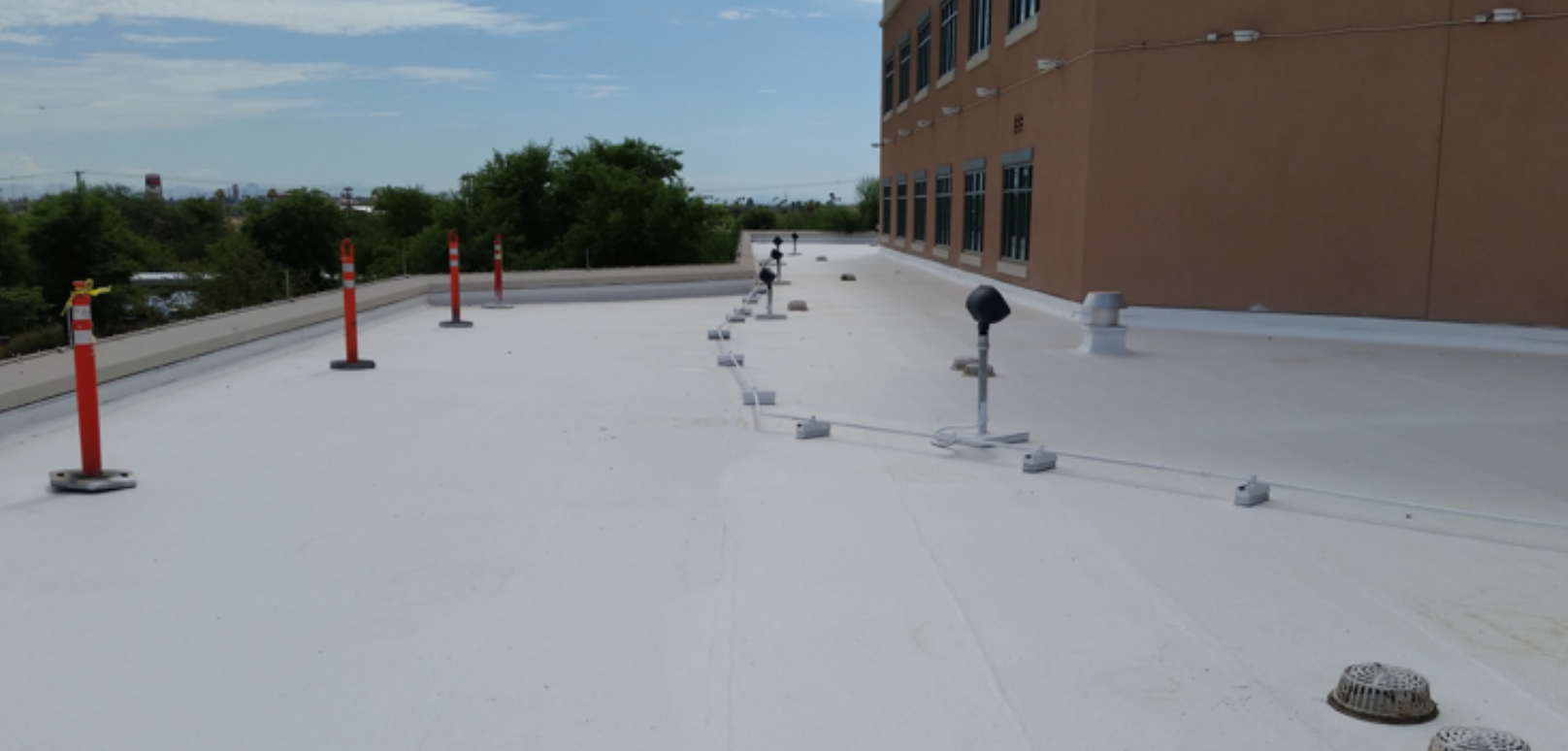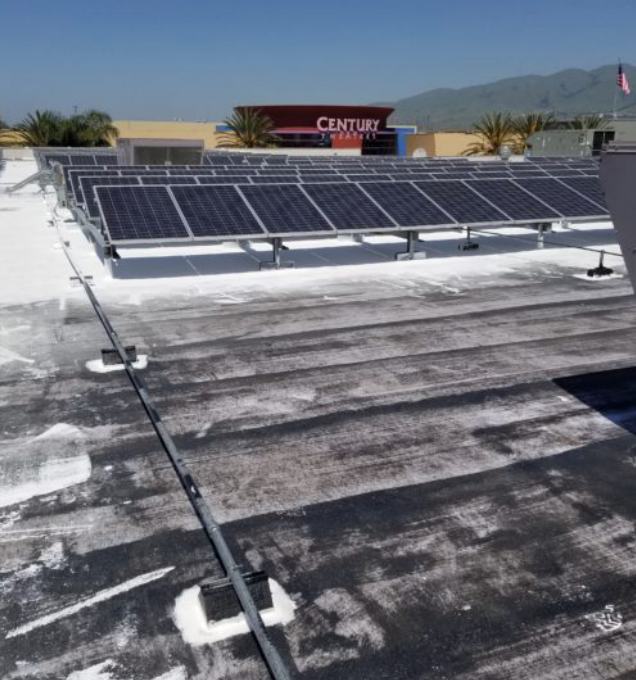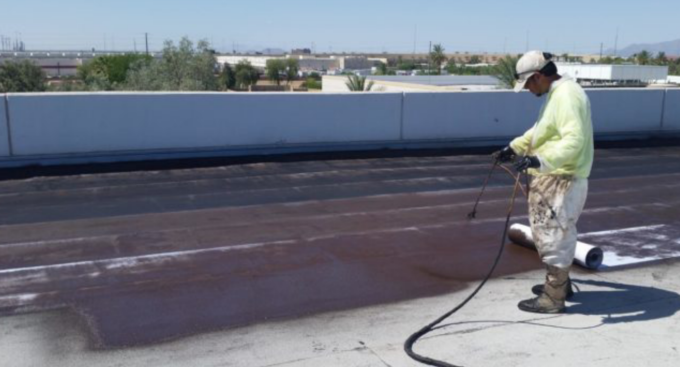
Tips for asphalt emulsion-based coating systems
Are you a contractor looking to perfect your skills or add some new ones? If so, here are some tips for applying asphalt emulsion-based coating systems!

Tips for getting started
First of all, a roof is a big investment. And a roof replacement used to be your only option at the end of a roof’s serviceable life. But roof coatings have changed all of that. Today, there are many new options for coatings and roof restoration. For example, asphalt emulsion-based coating systems are very successful! The secret to their success is in the reinforcing. In other words, reinforcement increases flexibility, strength, and durability. which all lead to leakproof.
Using this kind of system may be more than enough to get your roof back into working order without having to replace it. In fact, it could extend the life of your roof for years and years to come!
This kind of roof coating is made of asphalt emulsified with water and clay. They’re lightweight, water-based, very low-odor, and don’t require the existing roof to be torn off. Furthermore, they’re easy to apply, even for occupied buildings. They are very popular in the roof industry for these reasons. Plus they have great waterproofing. Applying this kind of roof coating is not complicated. However, it does have a number of steps.

Tips for applying asphalt emulsion roof coatings
First, figure out which specification fits your customer’s budget and desired warranty. For example, how much roof coating will you need? In general, we recommend a minimum of six gallons per square foot. However, many roofs need 12 gallons, and gravel roofs may take 24. That might sound like a lot, but the good news is that it’s actually economical. In fact, there is usually no reason to skimp.
Next, you should know that any roof coating needs the right conditions to cure once it’s applied. So keep an eye on the weather when you pick a day to apply it. Basically, these coatings shouldn’t be applied at temperatures less than 50 degrees. Because if the water in the coating freezes, it won’t cure properly and risks cracking. Also, make sure there is no rain in the forecast so the coating has time to dry.
Be sure to clean your roof deck, removing any loose material, dirt, and debris. For example, use a stiff broom or a pressure washer for tough dirt. Next, remove oils and greases. Be sure to remove any soap you use so the asphalt coating will adhere properly.
Furthermore, even though a good quality asphalt emulsion roof coating will fill in many small voids, make sure that larger ones are patched well. In addition, be sure to allow time for these repairs to cure before applying your coating. Also, you’ll need to repair and replace any damaged flashing and address all penetrations.

Apply Your Coating
Asphalt emulsion-based coating systems shouldn’t be mixed or thinned before application. Asphalt emulsion coatings are easiest to apply with a sprayer that is capable of high volume output at low pressure. Specialty tips are recommended.
Next, you should reinforce your coating with polyester fabric or fiberglass strands. Doing so will provide extra strength and flexibility to the roofing system. Then, the polyester fabric should be lightly broomed to get rid of bridging and wrinkles. Leave the scrim of the polyester slightly exposed so the acrylic topcoats will adhere better.
These roof systems can also be reinforced with chopped fiberglass strands. This requires specialized equipment. Once your reinforced base is installed you will top coat your reinforced asphalt emulsion base with our high-quality acrylic coatings. Your asphalt emulsion and polyester form the waterproofing membrane and your acrylic topcoats protect it all from the sun and provide energy efficiency.

Extra Application Tips From Experts
Asphalt emulsion gets a bad rap for being messy and difficult to use. The truth is that with proper preparation, equipment, and know-how, it can be easy and quick to use. Next are some of our best tips and advice for working with asphalt:
Staying Clean
One of the biggest issues faced with asphalt emulsion is the possibility of tracking it in the building, creating more cleanup and safety hazards. Keep your job clean and safe with these tips:
- Wrap ladder rungs with non-slip tape. When the job is done, just peel off the tape for easy cleanup.
- Wear rubber boots and coveralls over your clothes. When you need to leave the roof, take them off and leave them on the roof so no tracks are left in the building or parking lots.
- Use commercial-grade shrink wrap instead of painter’s tape to cover HVAC units, skylights, and other large equipment. Lightweight paper can easily blow off in the wind, leaving units exposed and wasting time and money on recovering the units.
- Ensure everyone knows to NOT walk through the emulsion while rolling out polyester. Not only will your shoes get covered and track sticky asphalt over the rest of the roof (including that just smoothed out polyester), but you’ll leave marks that can result in poor adhesion.
- Keep your asphalt emulsion and acrylic equipment separate.
- If you need to do minor clean-up, try an orange cleaner or mineral spirits. We do not recommend you use gasoline.
Protect Your Equipment—and the Building
Worried about equipment drying up overnight? Leave items that have touched the asphalt, such as brooms, hoses, wands, and rubber gloves, in a vat of water overnight. It’ll keep the asphalt from hardening and potentially ruining your equipment.
Another expert tip is to include a protective slip over the hose carrying the emulsion up the side of the building from the pump to the roof. That way, if the hose blows out, the building, parking lot, and cars below won’t be covered in asphalt emulsion. Types of slips include any flexible tubing or even a fire hose.
Use the Right Equipment for the Job
If you think this kind of coating takes too long, you may not be using the right equipment for the job. When using the right pump, hose, nozzle, and material packaging, you can cover up to 200 feet per minute! In addition, this high production rate raises your bottom line since you’ll finish faster. It also saves your customers money.
Make sure you choose a pump with the right pressure. For example, a pump with low pressure and high volume works best. Always use the properly rated hose and wand for your pumps PSI. And don’t confuse asphalt emulsion spray nozzles with an acrylic coating spray nozzle—they’re different. However, you shouldn’t be intimidated by the equipment needed. Asphalt emulsion roof coatings are easy to install. For more details, watch this video.
Choosing the Right Amount of Emulsion
There’s nothing worse than getting into a rhythm of spraying emulsion and rolling out polyester when your drum runs out of emulsion…again. In fact, you’ll spend most of your time replacing the container if you aren’t choosing one that’s large enough.
For example, if you are coating a large roof, order material in the largest size container possible. Our recommended pump can spray an average of about 12 gallons per minute, so you don’t want to be running out and rehooking every 5 minutes. In fact, with the right staging area, pump, and hose length, you can leave everything on the ground and pump the asphalt emulsion up to the roof.

Options and Next Steps
Warranty length should be considered. Our high-quality acrylic coatings have a standard 10-year material warranty. However, you can contact us if you’re looking for a longer initial warranty period. The amount of coating can usually be increased to achieve a worry-free roof that will last for 20 years. Simple maintenance and renewal of the topcoat at the end of the warranty period are all that are required to lengthen the 10-year warranty.

Contact us for more tips for applying asphalt emulsion-based coating systems
For more information on specialty equipment or how to use our full line of
architectural roof coatings, contact us today!


